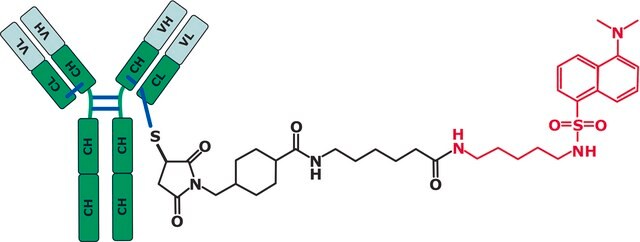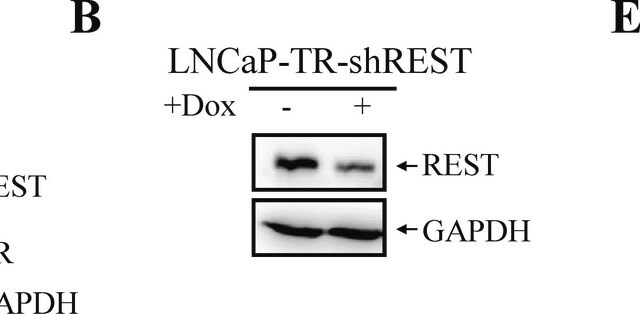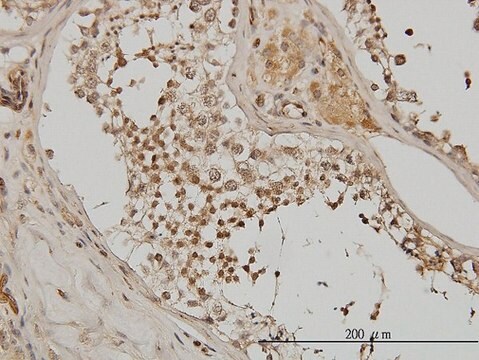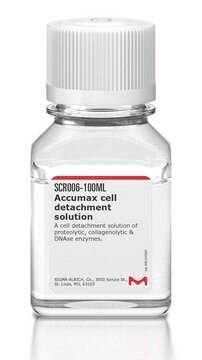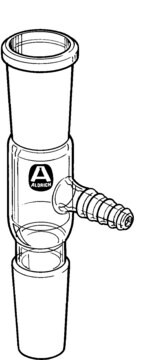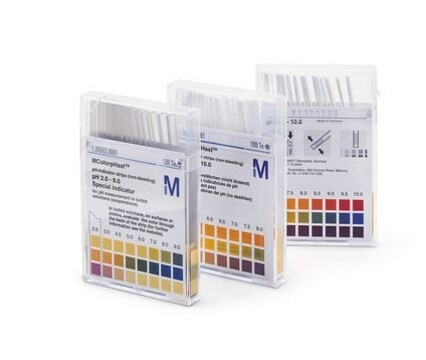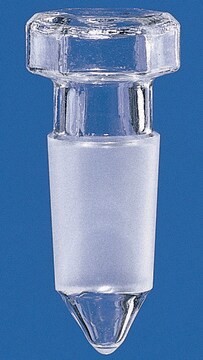おすすめの製品
由来生物
mouse
品質水準
抗体製品の状態
purified antibody
クローン
12C11, monoclonal
分子量
calculated mol wt 170 kDa
observed mol wt ~170 kDa
精製方法
using protein G
化学種の反応性
chicken, human, mouse
包装
antibody small pack of 100 μg
テクニック
electrophoretic mobility shift assay: suitable
immunocytochemistry: suitable
immunohistochemistry (formalin-fixed, paraffin-embedded sections): suitable
immunoprecipitation (IP): suitable
western blot: suitable
アイソタイプ
IgG1κ
エピトープ配列
N-terminus
UniProtアクセッション番号
輸送温度
2-8°C
ターゲットの翻訳後修飾
unmodified
遺伝子情報
chicken ... REST(422623)
詳細
特異性
免疫原
アプリケーション
Evaluated by Western Blotting in lysate from E14-Tg2a mouse embryonic stem cells.
Western Blotting Analysis (WB): A 1:1,000 dilution of this antibody detected REST in lysate from E14-Tg2a mouse embryonic stem cells.
Tested Applications
Electrophoretic Mobility Shift Assay: A representative lot detected REST in Electrophoretic Mobility Shift Assay. (Kim, S.M., et al. (2006). Biochem Biophys Res Commun. 346(2):426-35).
Immunocytochemistry Analysis: A representative lot detected REST in Immunocytochemistry applications (Shimojo, M. et al. (2008). J Biol Chem. 283(50):34880-6).
Western Blotting Analysis: A representative lot detected REST in Western Blotting applications (Chen, Z.F., et al. (1998). Nat Genet. 20(2):136-42).
Immunoprecipitation Analysis: A representative lot immunoprecipitated REST in Immunoprecipitation applications (Shimojo, M. et al. (2008). J Biol Chem. 283(50):34880-6).
Immunohistochemistry Applications: A representative lot detected REST in Immunohistochemistry applications (Paquette, A.J., et al. (2000). Proc. Natl. Acad. Sci. USA. 97(22):12318-23).
Immunocytochemistry Analysis: A 1:25 dilution from a representative lot detected REST in NTERA-2 cell line.
Note: Actual optimal working dilutions must be determined by end user as specimens, and experimental conditions may vary with the end user
物理的形状
保管および安定性
その他情報
免責事項
保管分類コード
12 - Non Combustible Liquids
WGK
WGK 1
引火点(°F)
Not applicable
引火点(℃)
Not applicable
適用法令
試験研究用途を考慮した関連法令を主に挙げております。化学物質以外については、一部の情報のみ提供しています。 製品を安全かつ合法的に使用することは、使用者の義務です。最新情報により修正される場合があります。WEBの反映には時間を要することがあるため、適宜SDSをご参照ください。
Jan Code
MABE1982-25UG:
MABE1982-100UG:
試験成績書(COA)
製品のロット番号・バッチ番号を入力して、試験成績書(COA) を検索できます。ロット番号・バッチ番号は、製品ラベルに「Lot」または「Batch」に続いて記載されています。
ライフサイエンス、有機合成、材料科学、クロマトグラフィー、分析など、あらゆる分野の研究に経験のあるメンバーがおります。.
製品に関するお問い合わせはこちら(テクニカルサービス)